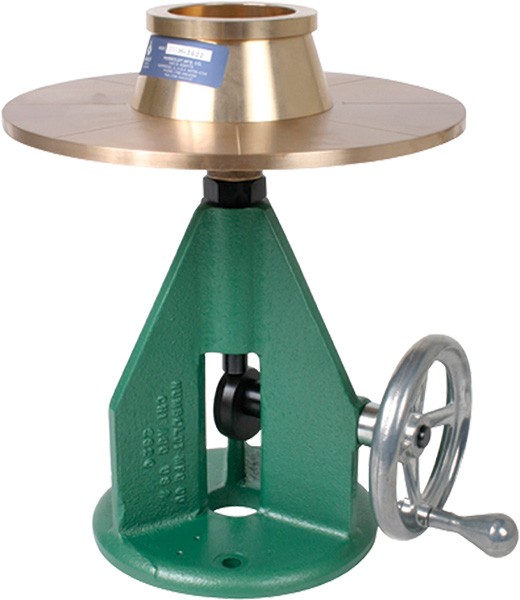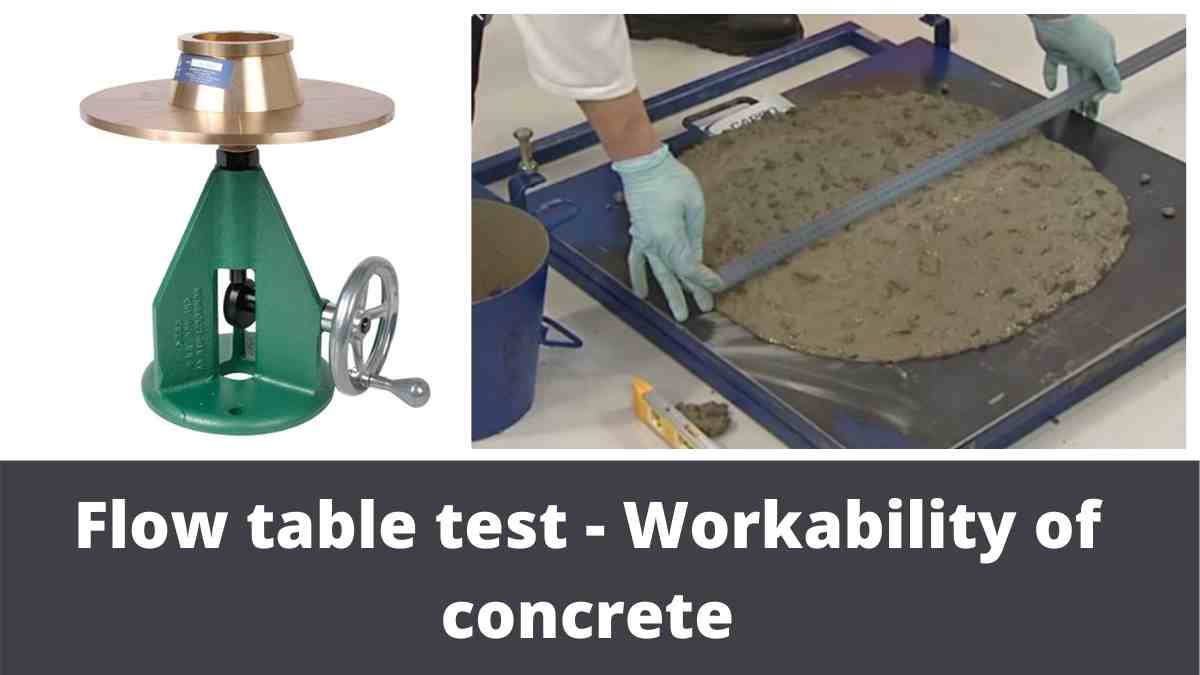Flow table test is on concrete is done to determine the fluidity of concrete. This also indicates the workability or consistency of the concrete.
Concrete is designed for a particular strength. The total structural stability is dependent on good quality concrete. Therefore quality control is one of the most important aspects to be taken into account during the production of concrete. Marginal variations in water to cement ratio, ingredient proportioning, increase in a slump, etc impacts the desired concrete strength which in turn affects the strength and stability of structures.
Quality tests on concrete
Quality tests performed on concrete are
- Production stage quality tests ( On fresh concrete before placing)
- Hardened stage quality tests ( hardened concrete specimens)
- On structures ( tests done on the structures )
Also read : Bitumen tests – 9 lab tests for bitumen
Production stage quality tests on fresh concrete
- SLUMP TEST
- Compaction Factor test
- Vee- Bee Test
- k slump test
- Kelly ball test
- Flow table test
This article is about the flow test of concrete.
Flow table test
The flow test is performed to measure the workability of concrete. In this test the workability of concrete is measured by examining the flowing property or fluidity of concrete. The flow test is a simple laboratory test. This test works on the principle of a jolting of the standard mass of concrete and measured by the flow of concrete. The flow of concrete indicates the workability of concrete.
The flow test is used to measure the workability of high or very high workable concrete, which eventually collapses a slump. It gives an idea about the quality of the concrete concerning consistency and cohesiveness. This workability test is quite simple to perform and is the best for the concrete which has a nominal maximum size of aggregate less than 38 mm.

RELEVANT IS CODE
- IS 1199 – 1959
- ASTM C 124 – 39 (Re-approved 1966)
- BS 1881 :105: 1984
The procedure describe is as per IS 1199 -1959
APPARATUS USED
- Flow table
- Mould
- Scale
- Hand scoop
- Trowel
- Tamping rod
The shape of the mould for the flow table test is a cone frustum. The base diameter of the mould is 25 cm and the upper diameter is 17 cm. It has a height of 12 cm. A handle is also present on the sides of the mould.

Flow table Test procedure
- Before starting the test, wet and clean the tabletop and the mould from gritty materials.
- Keep the mould firmly at the centre of the table.
- Now fill two-layer, each layer should be one half of the volume of the mould.
- Tamp each layer 25 times using a tamping rod uniformly.
- After tamping the top layer, struck off the excess concrete using the trowel.
- Also, clean the area of the table outside the mould.
- Then remove the mould immediately by steady upward pull.
- Raise the table and drop at 12.5 mm, 15 times in 15 seconds.
- Measure the diameter of the concrete spread about its 6 direction and compute its mean value.
CALCULATION
The percentage increase in the average diameter of the spreading concrete over the base diameter of the mould is called the flow of concrete.
Flow% = (Spread diameter in cm – 25) / 25 * 100
The value of flow test varies from 0 to 150%.
According to ‘A.M. Neville, honorary member of the American Concrete Institute’, this flow table test is appropriate for concrete mixes having a flow of 340 to 600 mm.


Comments are closed.